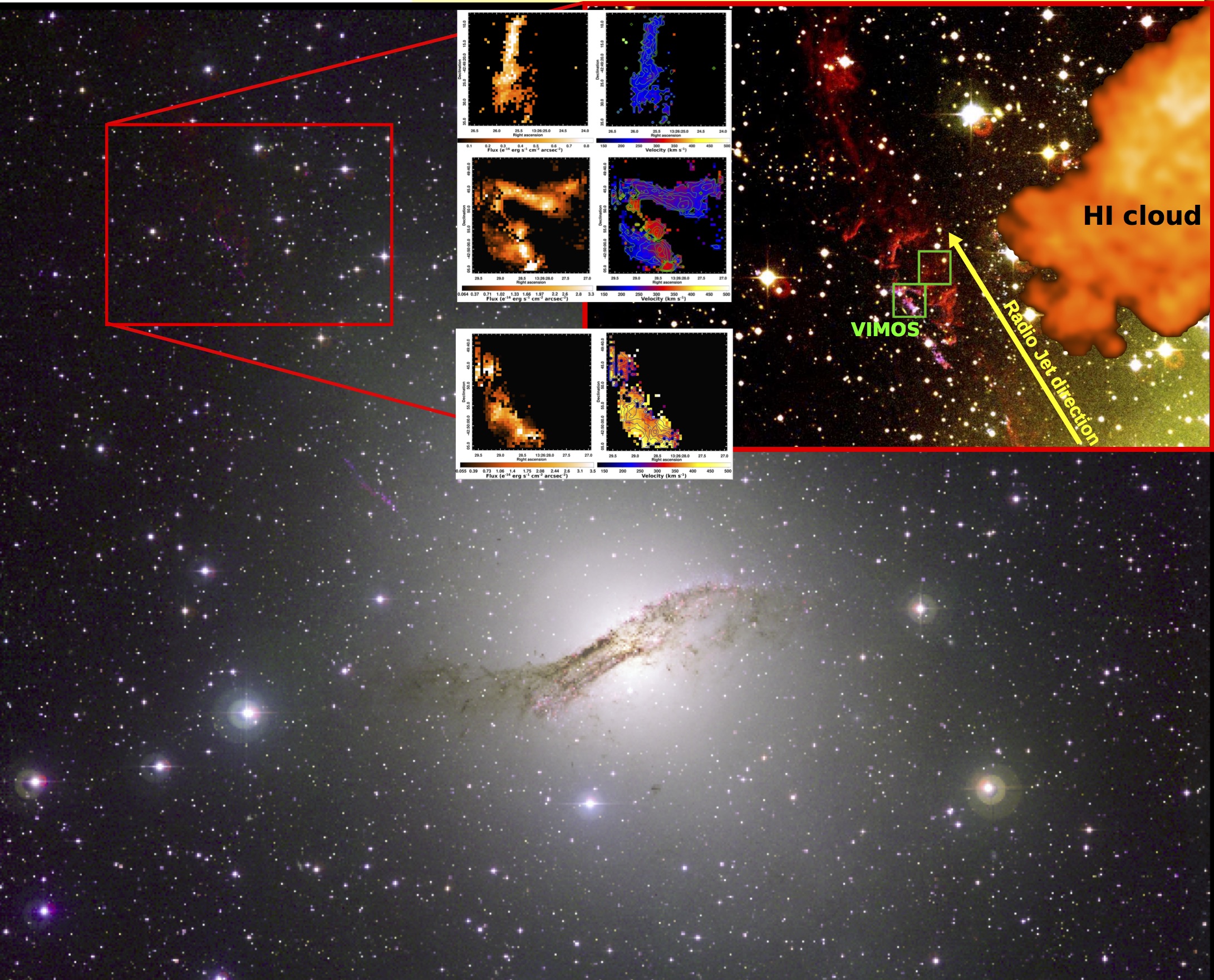Daily Image
21-01-2015The jet-ISM interaction in the Outer Filament of Centaurus A
| Submitter: | Francesco Santoro & Raffaella Morganti |
| Description: | Active galactic nuclei (AGN) are known to influence the evolution of their host galaxy through the injection of energy into the surrounding interstellar medium (ISM). Radio-loud AGN do this by their twin jets that are launched into the ISM and interact with the gas in the ISM. Centaurus A is the closest radio galaxy (d = 3.8 Mpc, or 12 million light year) in which an interaction between the radio jet and the surrounding ISM is thought to occur. This is because in the northern part of this galaxy, several filaments of highly ionised gas are found that are well aligned with the radio jet. Particularly complex is the situation in the so-called outer filament (shown in the background figure), which is found about 15 kpc (or almost 50,000 light year) from the centre of Cen A: this filament op ionised gas is located close to the axis of radio jet and, interestingly, also close to a large cloud of cold, atomic hydrogen gas (HI). Gas with anomalous velocities has been found at the southern tip of this HI cloud which could be an indication that the radio jet is hitting the HI cloud, blowing off and heating some of its gas and so creating the filaments of ionised gas. We have observed two fields in the outer filament using the Visible MultiObject Spectrograph (VIMOS) at the Very Large Telescope (VLT) to study the kinematics of the ionised gas and to further study the signs of interaction. We detect two kinematical components in the ionised gas in the outer filament (see velocity maps on the left side of the figure). Interestingly, the velocities of these two components match those of the nearby HI cloud. Both the regular, undisturbed HI structure, as well as that part of the HI which appears disturbed by the jet, have a kinematical counterpart in the ionised gas. This is very suggestive that the ionised filament is indeed caused by a radio jet hitting as gas cloud. A paper describing these results has been accepted for publication in Astronomy & Astrophysics: The jet-ISM interaction in the Outer Filament of Centaurus A by Santoro, F.; Oonk, J. B. R.; Morganti, R.; Oosterloo, T. (arXiv:1411.4639) |
| Copyright: | astron |
| Tweet |  |
